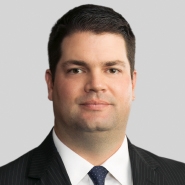2014 Year in review: Significant product liability cases from Ohio federal and state courts
In 2014, we prepared law alerts about several decisions from state and federal courts in Ohio that opined on issues important to product manufacturers, distributors and retailers. In summary, we are providing a brief review of those decisions.
Federal courts
Action or inaction by the Consumer Product Safety Commission
In Cummins v. BIC USA, Inc., 727 F.3d 506 (6th Cir. 2013), the U.S. Court of Appeals for the Sixth Circuit became one of several courts to construe 15 U.S.C. § 2074(b), the federal statute governing the admissibility of evidence that the Consumer Product Safety Commission (CPSC) has failed to act in relation to the safety of a product. Cummins provides at least four key takeaways for product manufacturers:
The statute excludes evidence only in relation to state law claims.
- The statute excludes evidence only of the CPSC’s complete failure to act.
- The statute excludes evidence only of the CPSC’s complete failure to act as to a “product.”
- Evidence of the CPSC’s activity leading up to a decision not to investigate is admissible regardless of the lack of explanation of the reason for the CPSC’s ultimate decision not to regulate.
Class certification requirements
In Phillips v. Philip Morris Cos., 298 F.R.D. 355 (N.D. Ohio 2014), the U.S. District Court for the Northern District of Ohio denied class certification in a suit alleging that Philip Morris, maker of Marlboro Lights, violated the law by advertising and selling “light,” “low tar,” or “lowered tar & nicotine” cigarettes when such cigarettes had as much tar and nicotine as Philip Morris’s regular line of cigarettes. Phillips provides at least two key takeaways regarding the class certification requirements found in Rule 23 of the Federal Rules of Civil Procedure:
- Even where a putative class satisfies the commonality and typicality factors of Rule 23(a), the predominance requirement of Rule 23(b)(3) is a substantial hurdle, requiring the plaintiff “to show that she and the absent class members have suffered the same injury.”
- The court seemingly confined the application of its Whirlpool holding—wherein the court affirmed the certification of a class of consumers despite individual issues relating to damages—to those cases presenting an “inherent design defect that rendered the product less valuable, regardless of who purchased it.” Only then will there be a “common injury upon the sale of the product” that may not undermine the requirements of Rule 23.
Claims against generic and brand-name drug manufacturers
In the case In re: Darvocet, Darvon, and Propoxyphene Products Liability Litigation, 756 F.3d 917 (6th Cir. 2014), the U.S. Court of Appeals for the Sixth Circuit delivered helpful precedent for both generic and brand-name drug manufacturers faced with wrongful marketing, misbranding and misrepresentation claims. First, the court found that where a plaintiff’s misbranding claim against a generic manufacturer is not preempted, in order to state a claim upon which relief may be granted, a plaintiff must allege not only the elements of the state law misbranding claim but also that there is new and scientifically significant information that was not before the FDA and that had this information been before the FDA, the FDA would have found the drug to be misbranded. Second, the Darvocet court found that the brand-name drug manufacturer cannot be held liable to the consumer for misbranding or misrepresentation arising from the consumer’s use of the generic drug that was not manufactured or distributed by the brand-name manufacturer.
The importance of expert testimony
In Rodrigues v. Baxter Healthcare Corp., 567 F. App’x 359 (6th Cir. 2014), the U.S. Court of Appeals for the Sixth Circuit affirmed the exclusion of the plaintiff’s expert’s proposed testimony that contaminated heparin could cause an onset of symptoms more than sixty minutes after administration, finding the testimony to be speculative and unreliable. The decision is consistent with other Sixth Circuit precedent emphasizing that a useful hypothesis in science often amounts to inadmissible speculation in the law.
State courts
Expert testimony in cases involving recreational vehicles
In Adkins v. Yamaha Motor Corp., U.S.A., 2014-Ohio-3747, 17 N.E.3d 654 (4th Dist.), Weil Brown represented Yamaha in another case emphasizing the importance of expert testimony. The plaintiff alleged that he suffered ankle fracture injuries after the Yamaha Rhino on which he was a passenger rolled over. He claimed that the Rhino was defective in design due to its instability and propensity to roll over. While the plaintiff pursued his claim, he failed to identify an expert witness, instead relying on testimony from the Rhino owner and evidence of a voluntary repair program that Yamaha entered into with the Consumer Product Safety Commission. Both the trial and appellate courts agreed that Yamaha was entitled to summary judgment on plaintiff’s design defect claim, and the Fourth District Court of Appeals became the first Ohio court to expressly state that “the design of an off-road recreational vehicle and its stability ordinarily is a complex, technical matter. Thus, a design defect claim involving an off-road recreational vehicle ordinarily requires expert testimony.”
In Zager v. Johnson Controls, Inc., 2014-Ohio-3998, 18 N.E.3d 533 (12th Dist.), Ohio’s Twelfth District Court of Appeals affirmed that a manufacturer of a component part is not liable for a defect in a completed product unless: (1) the component itself is defective or dangerous, or (2) the component manufacturer constructs or assembles the completed product or substantially participates in the design of the final completed product. Zager contains at least three key takeaways for original equipment manufacturers faced with product liability lawsuits:
- The component parts doctrine does not excuse the manufacturer of a defective component part, but if the defect complained of arises only when the component part is integrated into the final product, the component parts doctrine is still available as a defense.
- A component part manufacturer is not required to warn end-consumers of anticipated risks associated with the integration of a non-defective component part into a final product.
- Evidence that the manufacturer of the final product retained control of that product’s design is the best evidence that the component part manufacturer did not substantially participate in the design of the final product.
Zager cited at length to Romans v. Tex. Instruments, Inc., 12th Dist. Madison No. CA2013-04-012, 2013-Ohio-5089, which Ohio’s Twelfth District Court of Appeals decided at the end of 2013, finding the component part manufacturer—Texas Instruments—was not liable under the component parts doctrine for an alleged defect in a 2001 Ford Expedition. In addition to Texas Instruments and Ford, Plaintiff Romans sued the automobile repair shop—Bridgestone Retail Operations, LLC (“Bridgestone”)—for negligence in a case where a vehicle ignited and spread fire into Plaintiff’s home, killing three of his family members. Weil Brown successfully defended Bridgestone by demonstrating that Bridgestone had no duty to repair or warn of the latent defect in the speed control deactivation switch (SCDS), which allegedly caused the fire, based on Plaintiff’s description of the problems he was experiencing with the vehicle. Bridgestone prevailed on summary judgment at the trial court, the Twelfth District affirmed, and in 2014, the Supreme Court of Ohio denied plaintiff’s discretionary appeal.
For more information, please contact Terrance M. Miller, Joyce D. Edelman, Elizabeth L. Moyo, Jason T. Gerken or any member of Weil Brown’s Product Liability practice group.





